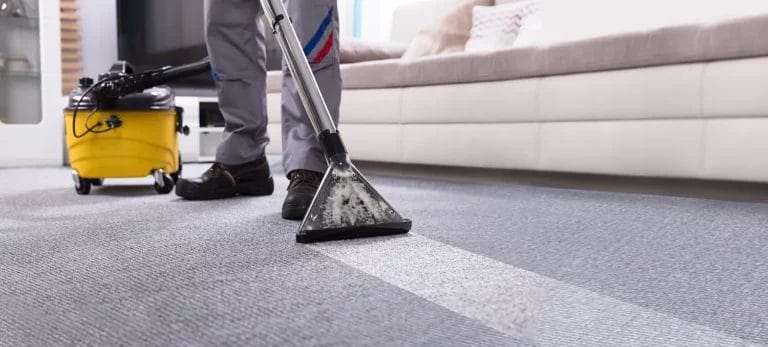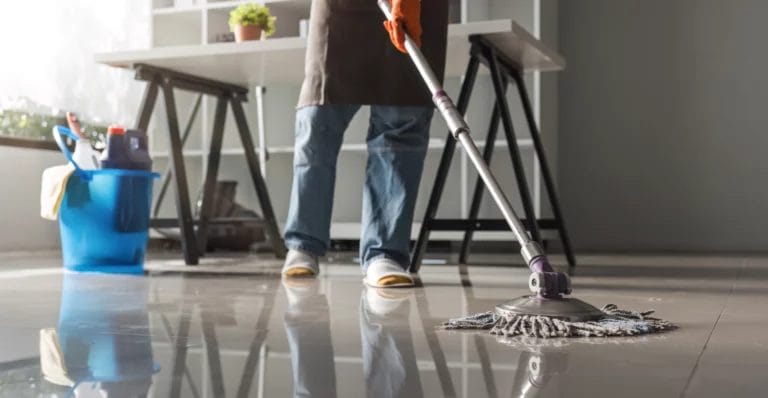Want a business that’s affordable to launch, easy to scale, and always in demand? A pressure washing business checks all the boxes. It’s ideal for individuals looking to build something of their own without needing a huge investment.
What You’ll Learn
- Licenses you’ll need to launch your business
- The insurance coverage you’ll need to protect your new venture
- The equipment to get started and pricing strategies
- Growth tips
6 Steps to Launch Your Pressure Washing Business
Starting your pressure washing business means taking care of the legal and operational basics first. Each step below helps ensure you’re ready to book your first job confidently and grow with fewer setbacks.
Step 1: Choose Your Business Structure
Decide whether to operate as a sole proprietorship, limited liability company (LLC), or another business structure. An LLC is a popular option because it separates your personal and business assets, offering protection if something goes wrong.
Some pressure washing business owners also consult with a tax advisor or legal professional. This ensures you choose a structure that aligns with your long-term financial and liability goals.
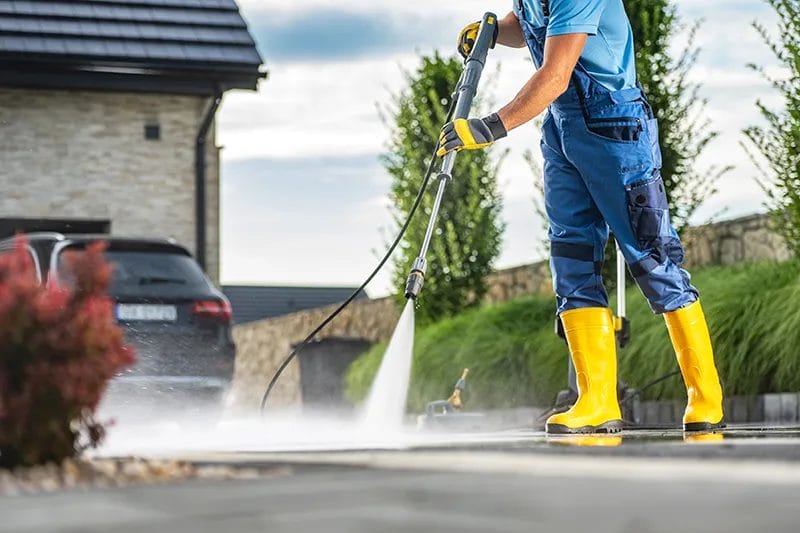
Step 2: Register Your Business Name and Get Your Employer Identification Number (EIN)
After picking a name for your business, register it with your state or county to make it official. This helps you operate legally and prevents others from using the same name. It’s also a key step in branding your pressure washing business and establishing a professional presence both online and offline.
Next, apply for an EIN through the IRS. This number is required to open business accounts, file taxes, and establish your business as a professional entity. Without an EIN, you may run into issues when applying for business licenses, permits, or insurance.
Step 3: Open a Business Bank Account
Opening a separate business bank account helps you separate your personal and business finances. This makes it easier to track your income and expenses throughout the year. It also adds credibility when writing checks or accepting digital payments. Clients and vendors are more likely to trust a business with a dedicated account.
Many entrepreneurs start with online-friendly options like Bluevine, Novo, or Relay, which offer no monthly fees and easy integration with bookkeeping tools. Look for an account that supports mobile banking, invoicing features, and low transaction fees to keep your pressure washing business running smoothly.
Step 4: Set Up Accounting and Invoicing Systems
Use tools like QuickBooks, FreshBooks, or Wave to manage your bookkeeping. These platforms help you track revenue, send invoices, and monitor your cash flow.
Automating these tasks saves time and reduces the risk of errors. Clean records also make it easier to apply for financing or file accurate tax returns.
Pro Tip: If you’re not comfortable managing finances on your own, consider hiring a professional accountant to help with setup or ongoing support. They can also help you understand tax deductions available to pressure washing businesses, such as equipment costs, supplies, and mileage.
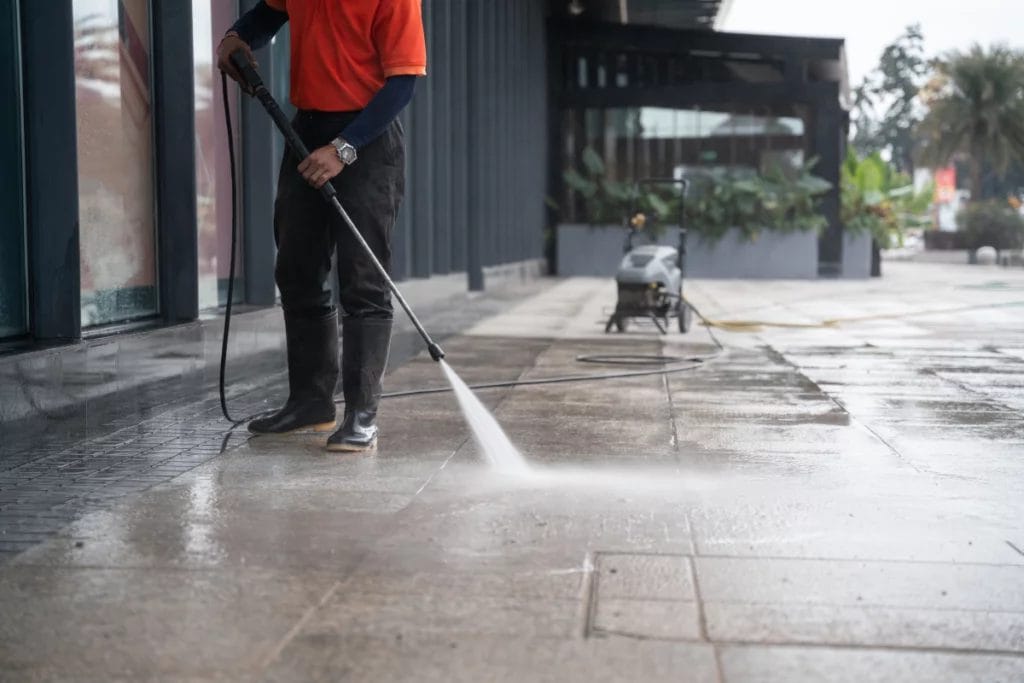
Step 5: Apply for Business Licenses or Local Permits
Most local governments require you to hold a license or permit before operating legally. Requirements vary by city or county, so check with your local business licensing office.
Some of the main permits and licenses you should expect to get before opening include:
- Water discharge permit – Required to legally release wash water into storm drains or sewers.
- Wastewater containment plan – Ensures on‑site containment for filters, tanks, or oil interceptors.
- Mobile washer permit – Gets you approval to operate on public roads or job sites
- State Department of Environmental Quality (DEQ) – Enforces water-quality standards and pollution control.
- Zoning permit – Confirms your business location is approved for commercial operations and complies with local zoning laws.
- General business/occupational license – A broad local permit to legally operate any business within your jurisdiction
- Environmental Protection Agency (EPA) or state environmental permit – Needed if using regulated chemicals or discharging near protected areas
Step 6: Purchase Business Insurance to Meet Local or Client Requirements
Pressure washing insurance protects your business from common risks, like accidentally damaging a client’s siding or having your gear stolen from a job site. Without proper coverage, you could be responsible for repairs or replacements out of pocket, which can quickly derail your profits.
Most clients, especially commercial ones, require proof of insurance before signing a contract. Having a Certificate of Insurance (COI) on hand shows you’re reliable and ready to take on professional jobs.
Insurance is a necessity. Pressure washing doesn't have the margins to absorb the damage it can cause.
David Klintworth, CEO, Duck Power Wash LLC
The most crucial coverage types include:
- General liability insurance: Covers property damage or third-party injuries that might occur during a job. This is the core policy every business needs.
- Tools and equipment insurance: Also known as inland marine, this coverage protects your gear while in transit or on a job site.
- Workers compensation: This coverage is required in many states if you hire employees. It helps cover medical bills or lost wages if a worker is injured on the job.
Tip: Want to make sure you’re meeting all client and state insurance requirements? We created a pressure washing insurance guide to help you know what coverage to get.
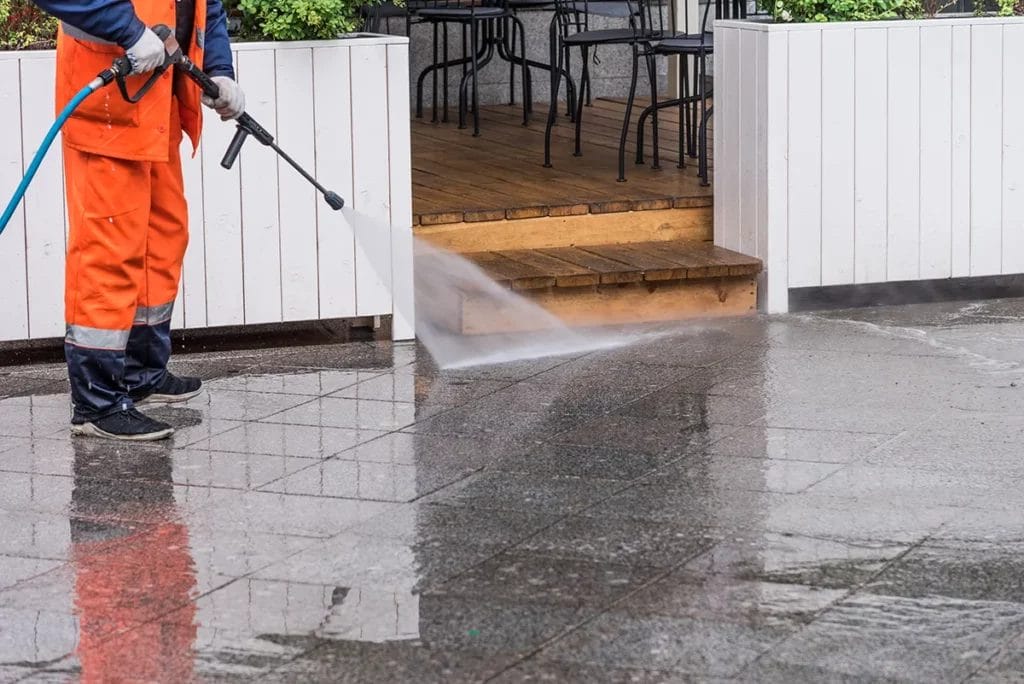
Pressure Washing Business Start-Up Cost
Pressure washing business start-up costs range between $6,000 to $50,000+. This covers business licensing, insurance, and the core equipment needed to begin working.
Key startup expenses to consider:
- Branded uniforms, waterproof boots, and safety gear to ensure professionalism and safety
- Business software to streamline bookings and invoicing
- Basic marketing tools, like a DIY website and business cards, to attract clients
- Reliable truck or van for transporting your equipment if you don’t already have one
- Ongoing vehicle expenses such as fuel and registration fees
Basic Equipment Every Pressure Washing Business Needs
Getting the right equipment is key to delivering quality service and working efficiently. Start with reliable cleaning tools that match the types of jobs you plan to take on.
Here are the essentials pressure washing businesses need, along with their estimated price ranges:
- Pressure washer (cold or hot water): $300 – $3,000+, depending on power and features
- Surface cleaners and nozzles: $100 – $500
- Extension hoses and reels: $50 – $300
- Trailer or van to transport gear: $2,000 – $10,000+ (used to new)
- Uniforms and safety gear: $100 – $500
Pro Tip: Cold-water systems cost less and work well for general cleaning. Hot-water machines handle tough grease and oil better but come with a higher price tag.

Tips to Launch Your Pressure Washing Business
Starting a pressure washing business is more than buying a machine and booking jobs; it’s about building a brand, staying competitive, and earning trust.
Here are key tips to set yourself up for success:
- Keep your branding consistent across all platforms
- Use the same logo, colors, and tone of voice on your website, social media, business cards, and vehicle signage. Consistent branding helps build trust and makes your business easy to recognize.
- Price services by job size, surface type, and local rates
- Set your rates based on factors like square footage, surface material, and how long the job will take. Also, consider if the surface needs special cleaning solutions or prep work.
- Research what other pressure washers charge in your area to stay competitive. Pricing too low can cut into your profits, while pricing too high may drive potential clients away.
- Offer online booking for convenience
- Make it easy for clients to schedule services by adding an online booking system to your website or linking through your social media profiles. Convenience can be the difference between landing a job and losing one.
- Ask for reviews and referrals after each job
- Happy customers are your best marketing tool. Politely ask for a quick review on Google or social media, and encourage them to refer you to friends or neighbors.
- Keep learning new techniques and stay on top of maintenance
- The industry evolves – stay sharp by learning the latest pressure washing methods and keeping your equipment clean and running properly to avoid costly downtime.
- Stay compliant with licenses, safety protocols, and insurance policies to build a strong reputation
- Make sure you’re operating legally and safely. Having the proper licenses, following Occupational Safety and Health Administration (OSHA) guidelines, and carrying insurance shows customers you’re serious and professional.

Pressure Washing Insurance Made Simple
You don’t need a big budget or a massive crew to launch a successful pressure washing business. You just need the right setup, solid marketing, and insurance coverage to protect you and your crew.
Common Questions About Starting a Pressure Washing Business
Do I need pressure washing insurance even as a solo operator?
Yes, even solo operators need insurance. Accidents can happen on any job, and without coverage, you’re personally responsible for property damage or third-party injuries.
Pressure washing insurance helps cover claims tied to things like overspray, equipment accidents, or damaged surfaces. It also shows customers you take your business seriously, which helps you stand out in a competitive market.
What happens if I damage a client’s property while pressure washing?
If you accidentally crack a window, strip paint, or damage landscaping with high-pressure water, the client can file a claim against you.
General liability insurance can pay for repair or replacement costs, so you’re not paying out of pocket. Without coverage, even a minor incident can drain your business funds or shut you down completely.
What’s the best way to protect my pressure washing equipment?
Tools and equipment insurance helps cover repairs or replacement if your pressure washer or other equipment is stolen or damaged on the job, in transit, or stored in a trailer.
Without it, you risk delays, cancellations, and lost income while you figure out how to replace essential gear.




